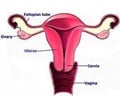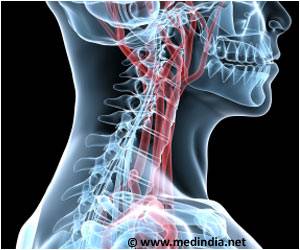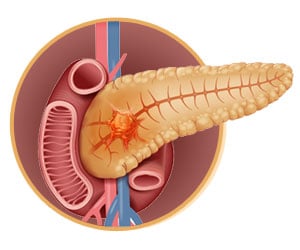Twins can be differentiated by parents through subtle differences such as facial expression, moles, voice tone and gait.

Scientists at The University of Texas MD Anderson Cancer Center in Houston have identified genetic mutations in endometrioid endometrial carcinoma (EEC), the most common form of this cancer of the uterine lining. The mutations revealed a more lethal version of an EEC subtype previously thought to respond well to treatment. It's possible that by identifying these patients early on, oncologists can try more aggressive treatment approaches to increase the likelihood for a positive outcome.
"EEC is categorized into subtypes that help determine risk of recurrence and guide treatment," said Wei Zhang, Ph.D., professor of pathology at MD Anderson. "Most patients have Type I, which can be diagnosed early and generally has a good outcome with treatment."
Type I accounts for 70 to 80 percent of all EECs. Type II is more troublesome and is usually diagnosed late in the cancer's progression resulting in a poor prognosis. Zhang's team, however, identified a cluster of patients within Type I that appears to have a more virulent form of it previously not recognized. Zhang labeled this patient group as Cluster II.
"The patients were mostly younger and obese that's typical for Type I. What's unusual is for patients in this disease category to have decreased survival rates," said Zhang. "Molecular subtyping of EEC may help oncologists with diagnosis and prognosis within this unique subset."
Zhang believes that by being able to identify molecular "attributes," physicians can identify EEC patients at risk for this more lethal form of the disease.
Advertisement
His team discovered distinctive genetic mutations in 87 percent of the Cluster II patients. The mutations occurred in the CTNNB1 gene, which is necessary for the creation and maintenance of tissue-producing epithelial cells. Within CTNNB1, genetic sequences known as exon 3 created a "hotspot," a cellular cauldron of biological blunders. This resulted in the normally passive Type 1 becoming deadly for some patients.
"The identification of this second cluster of patients with endometrial cancer helps to refute long-standing teachings that young, obese patients universally have endometrial cancers that are estrogen-driven and thus have a good prognosis," said Russell Broaddus, M.D.,Ph.D., professor of pathology at MD Anderson. "Endometrial cancer in this patient population is much more complex than we were previously led to believe. We hope that the study results can help pave the way for more individualized therapy of endometrial cancer patients who have tumors with CTNNB1 mutations."
Source-Eurekalert















